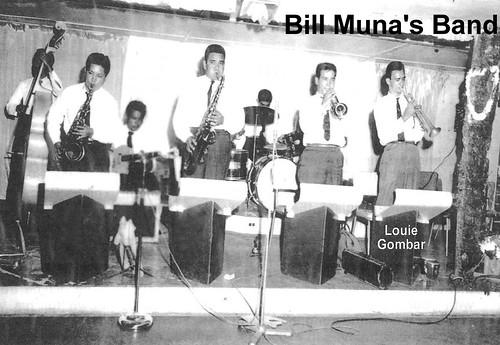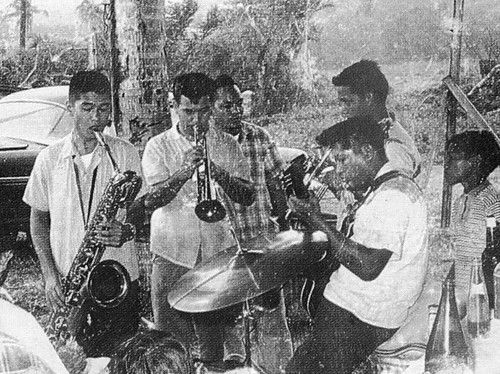Bill Muna
Musician, athlete, civic leader
George William Pereira Muna, more commonly known as Bill Muna, was a noted musician and active member of the community on Guam. He was an employee of the US Naval Public Works Center (PWC) up until his medical retirement in the late 1980s.
Muna formed the Bill Muna Band in the early 1960s and played with many noted Chamorro musicians such as Peter Muna, Pete Bautista, Linda Guerrero, Jesse Baleto, Fred Guerrero, and Louie Gombar. Muna also played with a group called the Downbeats playing what was known at the time as the “pålapåla circuit.” A pålapåla is hut-type structure or pavilion extending from a house to provide shelter from sun and rain that is a common feature of the logistics of Chamorro celebrations. The “pålapåla circuit” was what musicians at the time used to refer to weddings, christenings, village fiestas, and other similar celebrations at which they performed. Muna is best remembered for his talent for playing the trumpet and singing.
Muna joined the Compadres in the early 1970s. The Compadres played a variety of venues including many of Guam’s hotels, military personnel clubs, the old Joe & Flo’s club in Asan, private and public celebrations, and for the island’s manåmko’, or elderly, at the various senior citizens centers. The band is best known for it’s release of the album “Eva” in 1978 which was re-released as “Hafa Adai Ginen Compadres” some time in 2000. Muna was a member and leader of the band until his passing on October 15, 1994.
Muna had nine children with his wife Ana “Ann”: Mark; Annmarie; identical twins, Donna and Tina; fraternal twins, John and Jennifer; Linette “Buffy”; Juan; and Jesse Jason. Muna and his wife also reared twenty children from the Yap atoll of Ulithi.
Bill Muna was a staunch baseball fan and coached numerous teams from the Guam Little League, Babe Ruth League, and Guam Major League. The Bill Muna Baseball Field in Mangilao was named after him. Muna was also active in the Mangilao community and supported the Santa Teresita Catholic Church, as well as many other community-centered organizations. He also believed in bridging the gap between Guam’s generations and would gather the young and old together during events that featured music and sports.
He was a strong political supporter of both the Democratic and Republican parties of Guam, oftentimes straddling the fence within the strongly partisan political climate of the time. Muna strongly believed in the unification of the Chamorro people throughout the Mariana Islands and was very popular, not only on Guam, but in the Commonwealth of the Northern Mariana Islands (Rota, Tinian, and Saipan) as well.
To continue his legacy of advocating for civic and charitable activities, a scholarship in his honor “The Bill Muna Foundation Scholarship” was established at Guam’s two institutions of higher learning, the Guam Community College and the University of Guam.
Editor’s note: The photos and initial research for this entry is courtesy of Mico and Stevie Scott’s Jazz on Guam: An Oral History, a project funded by the Guam Humanities Council and in part by the National Endowment for the Humanities.


